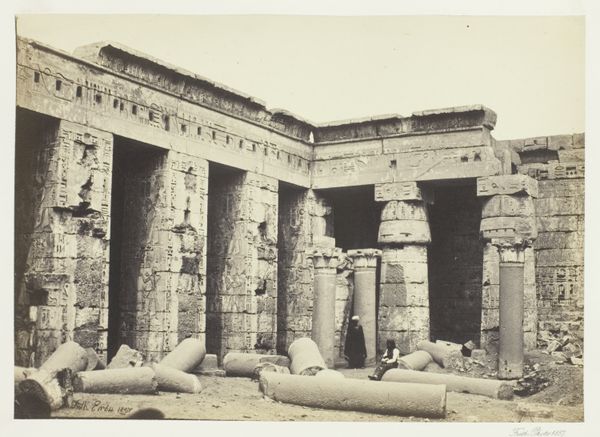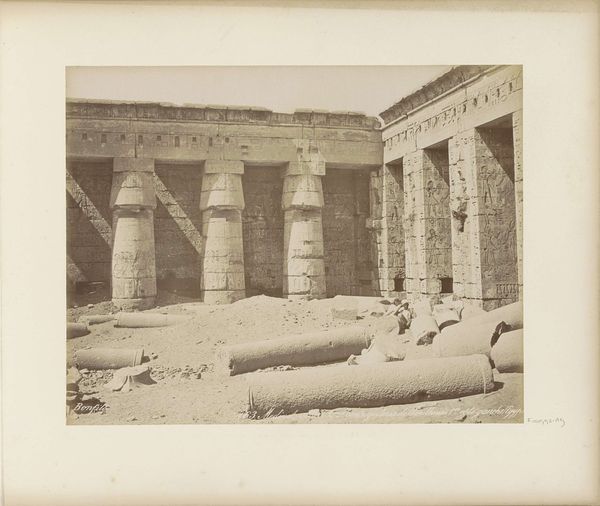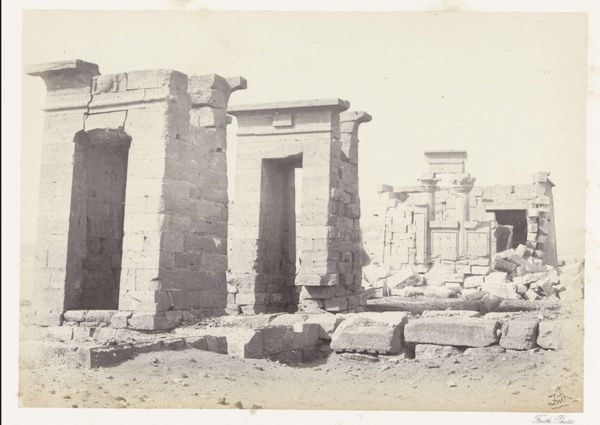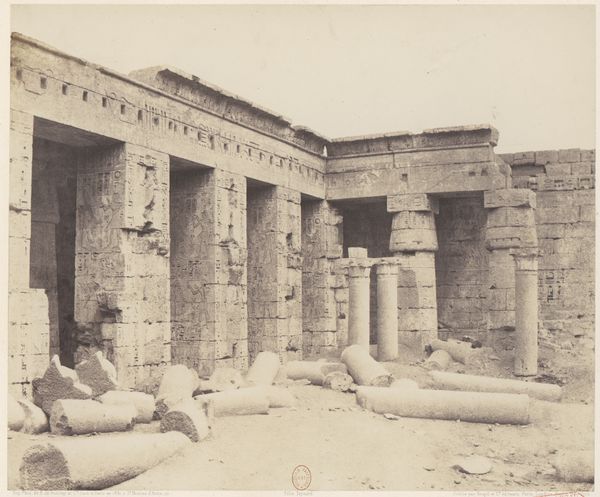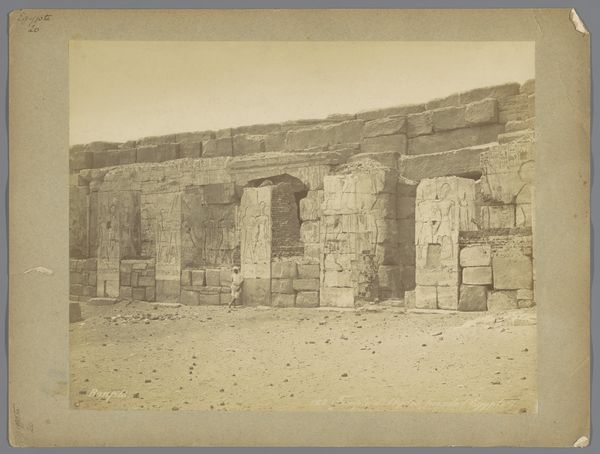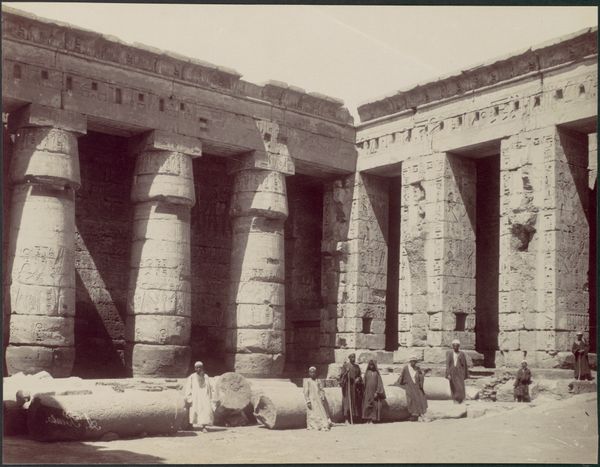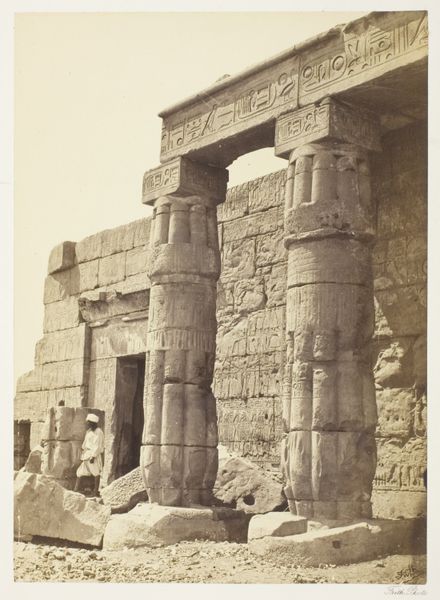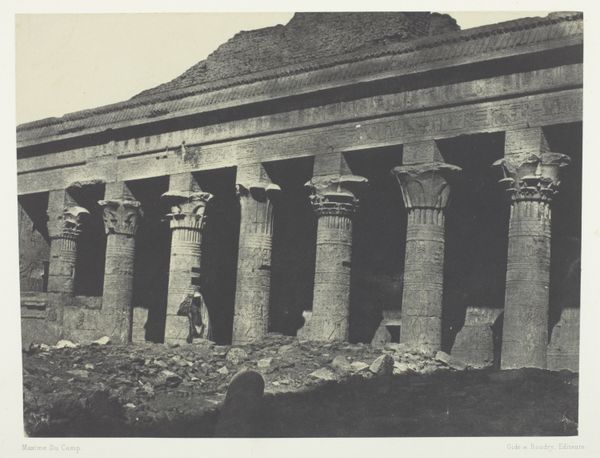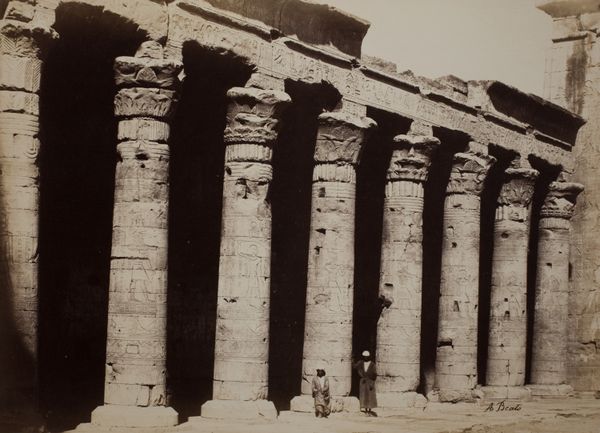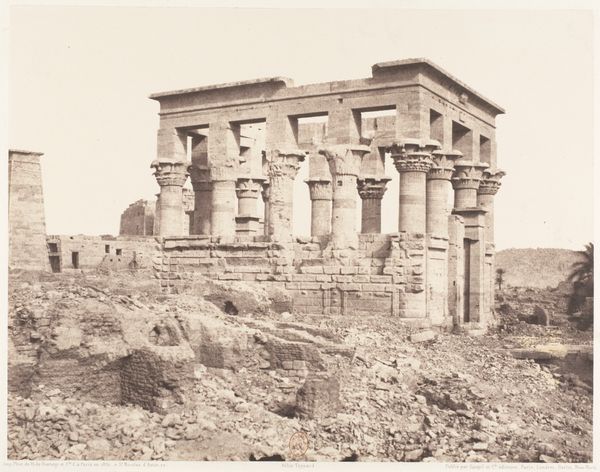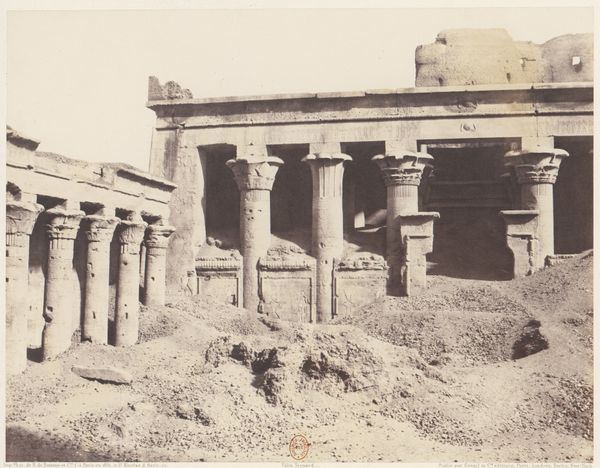
Hiërogliefen van de tempel van Ramses III te Medinet Habou 1850 - 1900
0:00
0:00
photography, architecture
#
landscape
#
ancient-egyptian-art
#
photography
#
ancient-mediterranean
#
architecture
Dimensions: height 269 mm, width 357 mm
Copyright: Rijks Museum: Open Domain
Curator: The photograph before us, attributed to Maison Bonfils and dating to the latter half of the 19th century, presents a section of the temple complex of Ramses III at Medinet Habu. It's entitled "Hiërogliefen van de tempel van Ramses III te Medinet Habou." Editor: What strikes me immediately is the image's somber mood; the ruins, bathed in sepia tones, evoke a sense of grandeur undermined by decay. The play of light and shadow across the fallen pillars really emphasizes the monumental scale. Curator: Precisely. What's interesting here is how photography itself plays a role in shaping our perception of antiquity. Consider the context: it was taken during a time when European interest in Egyptology was surging, largely fueled by colonial endeavors and their cultural byproducts. Bonfils, being based in the region, capitalized on that interest. Editor: True, and looking closely, you see how the vertical lines of the standing columns contrast with the horizontal wreckage scattered across the ground. This reinforces the inherent visual tension: stability versus impermanence. The light delicately etches out the hieroglyphs, almost turning them into ghostly whispers across the stone. Curator: The composition invites us to consider the relationship between power and its legacy. Ramses III's temple, a symbol of his reign, is captured here in a state of disintegration, reminding us of the transient nature of empires and cultural memory. Editor: Also, it's the texture! You can almost feel the rough-hewn quality of the stone beneath your fingertips. The lack of vibrant colors allows the viewer to focus on the formal elements, highlighting the architectural precision amid the ruins. It creates a tactile, immersive experience for the observer, despite being a two-dimensional image. Curator: Indeed. It allows for a deeper appreciation of the complexities and politics embedded within such depictions. It certainly shifts our own view, doesn’t it? Editor: Absolutely; examining its intrinsic elements clarifies its lasting effect. A fitting observation!
Comments
No comments
Be the first to comment and join the conversation on the ultimate creative platform.
